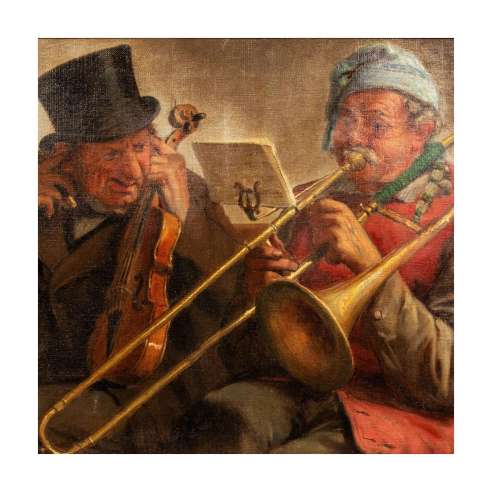Léon Herbo's 'A Cacophonous Concert' is a vibrant oil on canvas that captures the lively energy of a musical performance. This captivating work showcases the artist's keen observation and masterful handling of light and shadow. Herbo, a prominent figure in the Belgian Realist movement, is celebrated for his insightful portrayals of everyday life, and this painting is a testament to his talent.
- New
Léon Herbo, Oil on canvas+ A cacophonous concert
SOLD
















